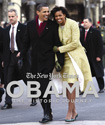For Chris Ware’s Acme Novelty Datebook Volume 2:
Product Description
Straggling behind the mild 2003 success of cartoonist Chris Ware’s first facsimile collection of his miscellaneous sketches, notes, and adolescent fantasies arrives this second volume, updating weary readers with Ware’s clichéd and outmoded insights from the late twentieth century.
Working directly in pen and ink, watercolor, and white-out whenever he makes a mistake, Ware has cannily edited out all legally sensitive and personally incriminating material from his private journals, carefully recomposing each page to simulate the appearance of an ordered mind and established aesthetic directive. All phone numbers, references to ex-girlfriends, “false starts,” and embarrassing experiments with unfamiliar drawing media have been generously excised to present the reader with the most pleasant and colorful sketchbook reading experience available.
Included are Ware’s frustrated doodles for his book covers, angry personal assaults on friends, half-finished comic strips, and lengthy and tiresome fulminations of personal disappointments both social and sexual, as well as his now-beloved drawings of the generally miserable inhabitants of the city of Chicago. All in all, a necessary volume for fans of fine art, water-based media, and personal diatribe.
This hardcover is attractively designed and easy to resell.
And for his Acme Novelty Library #18:
Product Description
In keeping with his athletic goal of issuing a volume of his occasionally lauded ACME series once every new autumn, volume 18 finds cartoonist Chris Ware abandoning the engaging serialization of his “Rusty Brown” and instead focusing upon his ongoing and more experimentally grim narrative “Building Stories.”
Collecting pages unseen except in obscure alternative weekly periodicals and sophisticated expensive coffee-table magazines, ACME Novelty Library #18 reintroduces the characters that New York Times readers found “dry” and “deeply depressing” when one chapter of the work (not included here) was presented in its pages during 2005 and 2006. Set in a Chicago apartment building more or less in the year 2000, the stories move from the straightforward to the mnemonically complex, invading characters’ memories and personal ambitions with a text point size likely unreadable to human beings over the age of forty-five.
Reformatted to accommodate this different material, readers will be pleased by the volume’s vertical shape and tasteful design, which, unlike Ware’s earlier volumes, should discreetly blend into any stack or shelf of real books.
Who could resist?
 So I just a got a Fedex — a fair-sized box containing a copy of the rather lavish coffee-table-style book Obama: The Historic Journey. This is, in part, a New York Times production. I got a copy because a Consumed that I wrote about Obama-inspired art is reprinted within.
So I just a got a Fedex — a fair-sized box containing a copy of the rather lavish coffee-table-style book Obama: The Historic Journey. This is, in part, a New York Times production. I got a copy because a Consumed that I wrote about Obama-inspired art is reprinted within.
I gave permission for that column to be included (free) a while back, and that had sort of slipped my mind until I got the nice note from the publisher asking for my address. I must admit I had no idea the book was such an extravaganza. It costs $40. Lush color photography throughout, as well as writing from many Times contributors the general public has actually heard of. I’ll check it out more thoroughly later.
Meanwhile, if you’re interested, more information here.
Posted Under:
rw
This post was written by Rob Walker on February 26, 2009
Comments (0)
Somebody was interviewing me today about the book and the current economy and all that, and the conversation turned to Tropicana bowing to consumer pressure (apparently) to junk its recent redesign. What does that episode say about the present state of the “secret dialogue between what we buy and who we are”?
Well, for one thing it’s an example of one manifestation of that dialogue becoming somewhat more open — in the sense that one of the things the Web does is make visible consumer sentiments that would have been harder to quantify in the past.
More interesting, though, I would suggest, is that the episode underscores the surprising degree to which consumers want to participate in this dialogue. By that I mean: If nobody cares about brands anymore (as various experts have claimed for years, and are claiming once again with the recession as the new rationale), then why in the world would anybody go to the trouble of emailing a company, or starting a Facebook group, about package design? After all, the juice didn’t change. So, you know, who cares?
Lots of people, that’s who. Marginal Utility picks up on a comment from some Tropicana exec that the decision was made because the brand’s “most loyal consumers” were supposedly unhappy: “That they bother to complain is precisely what makes them loyal,” Rob Horning writes. “Others would probably just buy something else without a second thought. Myself, I would prefer to be one of those others.”
To me, that’s definitely a more reasoned response: I mentioned that we at Murketing HQ disliked the new design, and responded by trying some alternatives. While we talk about this kind of consumer/design trivia all the time around here, it never occurs to us to get involved in some kind of Web-enabled protest movement, or at least not about the way a package looks.
After all, it’s not like the aesthetics of Tropicana is some kind of important issue worth rallying around — certainly nothing worth treating like a consumer-rights battle that pitted the grassroots against corporate power.
And yet, there’s at least some evidence that certain observers see this incident in precisely those terms. For example, Marginal Utility also noted the Kottke entry on the Tropicana episode, which declares: “We won!”
I have something in The Big Money today: A call to commercial persuasion pros to use their skills on behalf of causes and ideas they believe in — not nonprofit client causes, and not the ideas of socially-responsible-business clients. Their own causes, their own ideas. The piece is here.
It’s pleasing to have something the extended realm of Slate again, after many years.
Posted Under:
Ethics,
rw,
Suggestions
This post was written by Rob Walker on February 25, 2009
Comments Off on Memo to the ad biz…
A (new) friend of Murketing passes along an interesting example of the, uh, inspiration for a TV commercial from a big agency. It’s a Snickers ad that ran, as I understand it, in Mexico.
Here is the opening sequence of the 2007 skateboarding video Fully Flared, which features skaters doing various stunts amid concrete ruins — made remarkable by various explosions that occur during and just after said stunts. If you’re into that sort of thing, it’s pretty impressive. I gather Ty Evans and Spike Jonze were the principle filmmakers.
Here is the Snickers ad, as posted a few days ago on The Berrics. It features skaters doing various stunts amid concrete ruins — made remarkable by various explosions that occur during and just after said stunts.
You get the idea: Very similar. (Though in the latter, the skaters eat some Snickers bars.)
The Berrics also posts this Smoking Gun-like document which appears to be the pitch & storyboarding for the ad. The agency is BBDO. In case you’re curious what The Berrics’ view is of this, the ad is referred to on their site as “The BBDO Attrocity.”
Perhaps there is more to the story? If not, it does appear pretty blatant and shameless.
 Unless you’re in New Orleans. Then it’s something better than that.
Unless you’re in New Orleans. Then it’s something better than that.
To mark Mardi Gras, I will recommend a book about New Orleans. Immodestly, I will recommend my own book, Letters From New Orleans, published by the mighty Garrett County Press.
It’s not about Katrina and its aftermath. It’s a book of essays about how the city was for us when we lived there. The first edition was published in 2005, mere weeks before Katrina came along, an event that of course recast the book against my will. Kate Sekules’s NYT review here; other reviews and so on are here. (The second edition does include a post-Katrina afterword.)
While I’m being immodest, I’m not being greedy. To this day, all my royalties are redirected to organizations involved in post-Katrina relief efforts. While the specific nature of those efforts have of course changed, they haven’t stopped.
Happy Mardi Gras, wherever you are.
Save
 So, speaking of design: I’m interested to learn, via Better Living Through Design, about the Normal Bookmark. It is “a simple, plain bookmark made from quality paper with a natural texture and color.” It is further described as a reaction to a “flashy” free bookmark that came with a purchase from a shop and that thus included that shop’s logo. This logo-ed bookmark:
So, speaking of design: I’m interested to learn, via Better Living Through Design, about the Normal Bookmark. It is “a simple, plain bookmark made from quality paper with a natural texture and color.” It is further described as a reaction to a “flashy” free bookmark that came with a purchase from a shop and that thus included that shop’s logo. This logo-ed bookmark:
reminded me of today’s busy society, where every company is trying to outdo, outsmart, out-compete and out-advertise each other. As a result, I feel our simple human lives have become quite suffocated and fatigued under the overwhelming pressure from modern-day media.
Good design is design that is invisible and should be free of the designer’s ego.
Thus the Normal Bookmark is just a blank piece of thick paper. With rounded edges. A pack of five costs $7.
Now I ask you: Is charging more than a dollar for a blank piece of thick paper really an example of “good design”?
It’s not clear what the specific paper-type is, or whether it’s, I don’t know, recycled or something okay now I see this page says the paper is “quality paper from managed and renewed forests.” That’s still pretty vague for me.
But seriously: Couldn’t anyone “distracted” by overly colorful bookmarks simply look around their apartment/home and find some suitably blank scrap material that could be repurposed into a bookmark? And for that matter, aren’t we in a recession where everybody is supposedly trying to be all conspicuously frugal? Or is this really just a satire?
If you follow the design world at all you know doubt know that Tropicana’s redesign was, um, controversial. There are always those who will argue that controversy is just another form of buzz, and long-term good for a brand. Apparently, Tropicana owner Pepsi doesn’t see it that way in this case:
Redesigned packaging that was introduced in early January is being discontinued, executives plan to announce on Monday, and the previous version will be brought back in the next month.
Wow. I really can’t think of another example of such a retreat (in the context of a high profile package redesign, I mean). Earlier I liked to this Brandweek bit that says “The new packaging has 20 design trademarks and copyrights. It took 30 people five months to develop it.”
Probably this story will largely be positioned as an example of the enhanced power of consumers to complain — the NYT story is full of the usual email-and-Facebook exaples, etc. And maybe that’s partly true.
I also think, however, that this was a particularly egregiously unneeded and badly executed redesign. I say that, basically, as a shopper: Here at Murketing HQ we had several discussions about how weak and generic the new look was — and while we did not bother to write the company or join any Facebook groups to express our displeasure, it did actually cause us to start trying different OJ brands.
Now, Murketing HQ is kind of a weird place, and not representative of normal consumer (or even human) behavior. But still.
My personal take is that as a redesign, this one was emblematic of the worst tendencies of some designers to want to change everything, and for no good reason — to undervalue the power of the familiar. I can just hear the discussion about how the orange-with-a-straw-in-it symbol was corny and “dated,” and that that the excellent Tropicana logo letterforms were stale and should be scrapped and made “contemporary.” The result, inevitably, was a look that I suppose is very “now,” but in the worst way: It looks like everything else. Just my two cents.
Trivia: The design firm on this was Arnell, which came up in a December 9, 2007 Consumed about the (much-hyped in the design world) Home Hero fire extinguisher. Is that still around?

Quick reminder: There is no Consumed column this weekend. And now some updates.
Above: New(ish) from The Black Apple. (You may remember her from the Handmade 2.0 story.)
Rich Brilliant Willing, whose hypothetical design project Green Cell was the subject of this April 20, 2008 Consumed, get some attention for a more recent project — Russian nesting doll tables — here.
I did a January 27, 2008 column about Kiva. This past I got an email from somebody at BetterLabs about an app the created: If you want to make a loan to a Kiva entrepreneur, but have particular criteria (a particular country, or maybe some particular sort of business) and want to be alerted when there’s a loan-seeker who meets those criteria, then you can try Kiva Alerts.
And in new links on the roll: Adding Yu-Ming Wu’s new blog to the Brand Underground section; Yu-Ming is a very smart guy and someone I like a lot, and appears in Buying In. Also adding The Sound of Young America blog to the Hard to Categorize category.
I’ve been expanding on the idea of unconsumption, as originally explored in this old post, and then this page. (And to an extent in this Consumed column.)
Here is the latest development: I have lately started a Tumblr blog called unconsumption. I’m getting some help from regular Murketing Organization contributor Tom Hosford. If you go unconsumption.tumblr.com, you’ll find a working expanded definition of what unconsumption is all about. If you browse through what Tom and I have put on the site thus far, you’ll get an even better idea.
And:
1. I really hope you will check it out. Here’s the link again.
2. I hope you will spread the word about it.
3. If you would like to be involved as a contributor, I hope you will let me know. There are lots of relevant blogs etc. that I just don’t have time to read and search for useful unconsumption-related links. I think this project will be more successful if there are more people involved as contributors to the Tumblr blog. So get in touch at murketing@robwalker.net.
4. Please?
This is more or less phase 1 of the newly revitalized unconsumption project.
More soon.
 Explanation: “You are looking at ‘la colrita’ ….an original digital photograph of a taco truck. I then digitally manipulate the image and print it on high quality archival paper. Each print is numbered and signed by me. The taco truck series is a limited edition of 100 prints each.” Via Poppytalk.
Explanation: “You are looking at ‘la colrita’ ….an original digital photograph of a taco truck. I then digitally manipulate the image and print it on high quality archival paper. Each print is numbered and signed by me. The taco truck series is a limited edition of 100 prints each.” Via Poppytalk.
Got some interesting, and mixed, reactions to yesterday’s note about Twitter & orchestral performance. Here are two more bits about Twitter & music:
1. Coudal points to 406 bands who Twitter.
2. Wired’s Epicenter blog assesses Tra.kz, billed as a “new tool for putting music on Twitter.” While unimpressed by some aspects, Epicenter does say the Tra.kz player “could prove beneficial for labels, artists and users looking to distribute music on the Twitter platform, as well as Twitter users looking for new music. The player includes play and pause, a short version of the song’s URL (of course), and, perhaps most importantly, buttons that let listeners to re-tweet or otherwise share the song. (Bands must host the MP3s themselves.)”
These examples have more to do with promotion/connection/distribution than with changing the nature of a performance (like the earlier example), but still worth noting.
Posted Under:
"Social" studies,
Music
This post was written by Rob Walker on February 20, 2009
Comments Off on Another quick note on Twitter & music
I’m not sure how interested you are — or how interested I am — in Anna Wintour’s take on virtue, frugality, the new consumer, and all that. But I was amused by this:
I don’t think anyone is going to want to look overly flashy, overly glitzy, too Dubai, whatever you want to call it.
“Too Dubai.” I have to remember that .

I’m just crazy about this person‘s work. I keep seeing it and enjoying it.




 "
"


 So, speaking of design: I’m interested to learn, via
So, speaking of design: I’m interested to learn, via 














 Kim Fellner's book
Kim Fellner's book  A
A